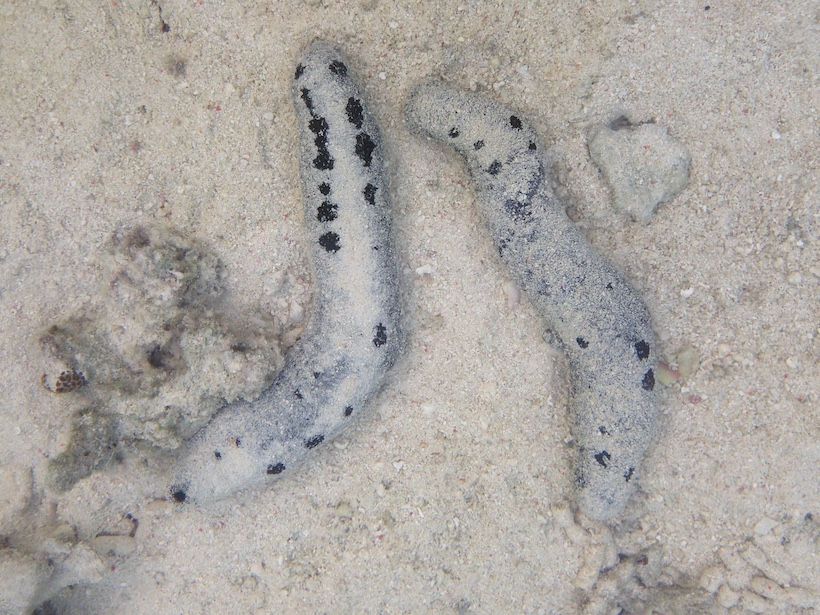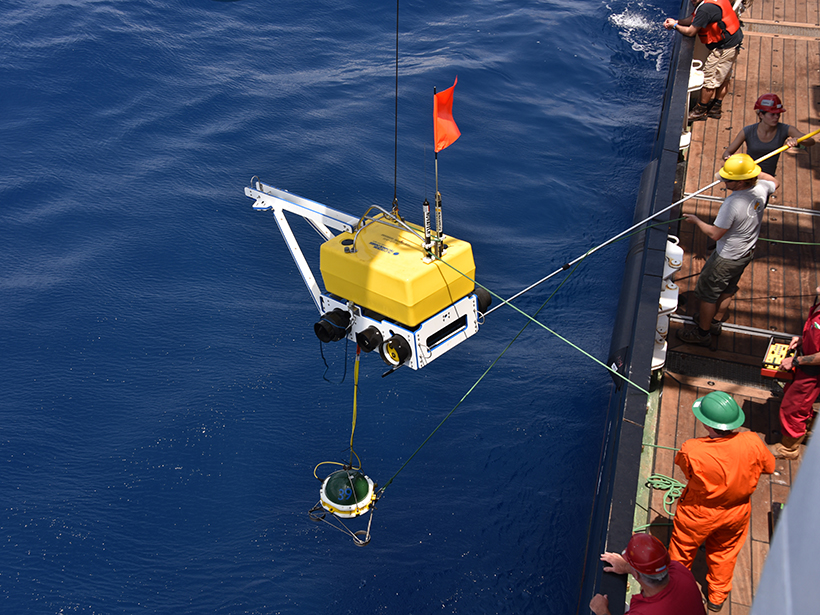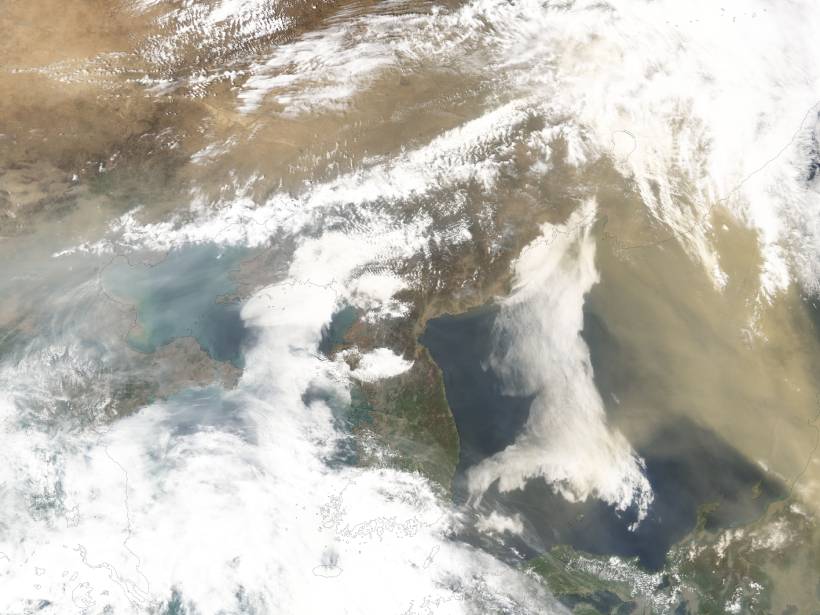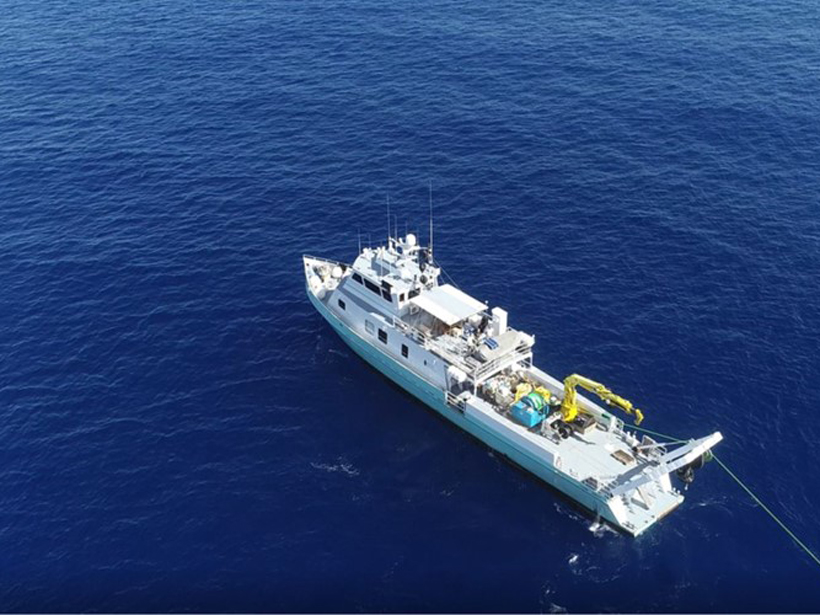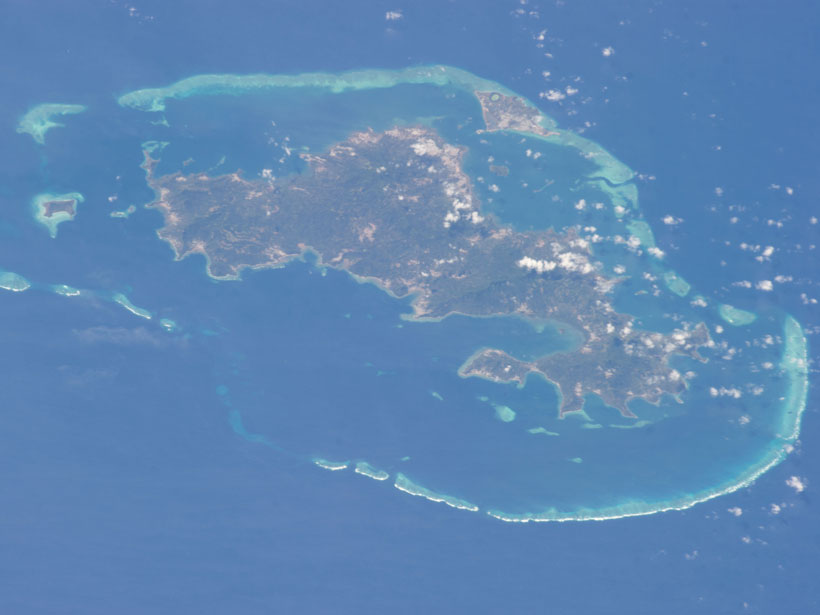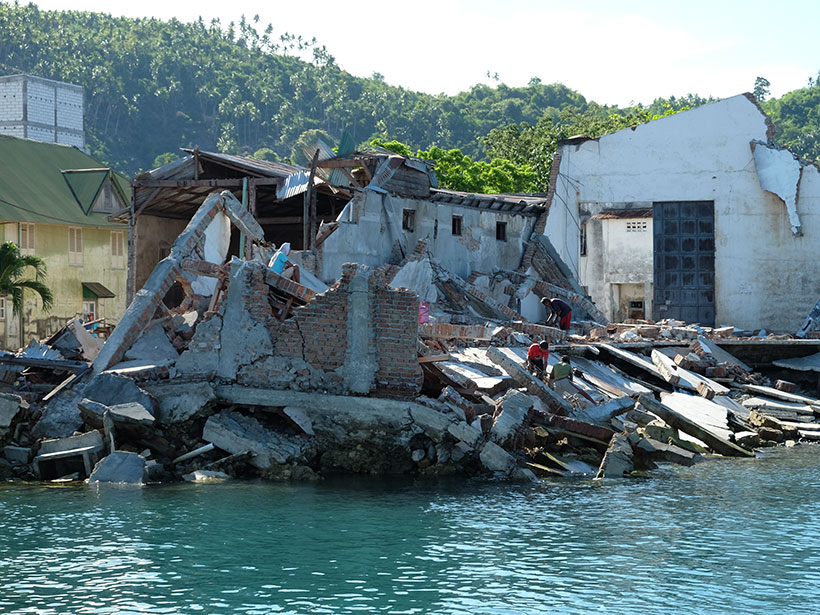Researchers use sediment cores to study the amount and origin of sediment organic carbon in one of the least studied regions of the planet: hadal trenches.
seafloor
A Massive Methane Reservoir Is Lurking Beneath the Sea
Scientists have found a methane reservoir below the permafrost seabed of the Laptev Sea—a reservoir that could suddenly release large amounts of the potent greenhouse gas.
Sea Cucumbers: The Excremental Heroes of Coral Reef Ecosystems
Drone surveillance reveals just how big a contribution sea cucumbers make to reef habitats.
Geologists Have a New Tool for Reconstructing the Ancient Climate
A new study of seafloor sediments finds that the temperature record in the early Paleozoic corresponds to significant shifts in the diversity of life on Earth.
A New Understanding of the Mid-Atlantic Ridge and Plate Tectonics
The first seismic data obtained directly from the Mid-Atlantic Ridge suggest that upwelling may contribute to seafloor spreading.
Dust on the Wind
A new study confirms that an important wind system is shifting due to climate change.
Freshened Groundwater in the Sub-seafloor
Scientists are using a variety of geochemical, geophysical, and numerical methods to study offshore freshened groundwater and better understand its role in the global water cycle.
New Volcano, Old Caldera
Researchers suggest a magma chamber sits within an old submarine caldera structure that extends into the mantle. Nearby, a new underwater volcano emerged with a flurry of seismicity.
Rethinking Darwin’s Theory of Atoll Formation
Atolls have a long and complex history related to seafloor evolution, and Darwin’s model is only the beginning of the story.
Redes Sociales Ayudan a Revelar la Causa del Tsunami en Indonesia en el 2018
Videos de Twitter y YouTube ayudaron a los científicos a descubrir los mecanismos físicos que generaron el gran tsunami en Palu Bay después de un terremoto de magnitud 7.5.



